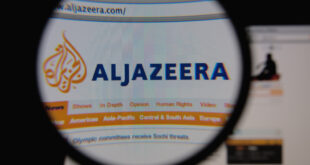NATO members remained divided Monday over Ukraine’s potential membership in the military alliance ahead of NATO’s two-day summit in Vilnius, Lithuania, Tuesday and Wednesday.
NATO members in Eastern Europe who are in the direct path of Russian aggression have backed Ukraine’s entrance. But countries such as the United States and Germany fear that if Ukraine were to become a NATO member before the war’s end, it would drag the whole alliance into the conflict against Russia and potentially spark a global war.
However, NATO Secretary-General Jens Stoltenberg said he had put forward a package that included the removal of a key requirement to Ukraine’s entrance into the alliance: The Membership Action Plan (MAP) — a list of political, economic and military goals that other eastern European nations had to meet before joining the alliance.
Ukrainian President Volodymyr Zelenskyy, who is expected to attend the summit, wants clarity as to when NATO foresees Ukraine’s accession into the alliance after Russia’s war on Ukraine ends and is asking for security guarantees until that time.
Stoltenberg said Monday, “No final decision has been made but at the summit I am absolutely certain that we will have unity and a strong message on Ukraine.” He said leaders at the Vilnius summit this week will agree on a “multi-year package of support” for Ukraine.
“This package will help Ukraine rebuild its defense and security sector, so that it can defend against further aggression,” Stoltenberg said in a Foreign Affairs article published Monday. “It will ensure that the Ukrainian armed forces are fully interoperable with NATO forces.”
The NATO chief said the alliance will host the first meeting of a new NATO-Ukraine council that will serve as “a platform for decisions and crisis consultation, where NATO allies and Ukraine will sit as equals to tackle shared security concerns.”
Russian President Vladimir Putin has cited NATO’s expansion toward Russia’s borders over the past two decades as a reason for his decision to send his armed forces into Ukraine in February of 2022. U.S. President Joe Biden has said NATO has an open-door policy on countries requesting NATO membership.
EU card
Turkish President Recep Tayyip Erdogan said Monday his country could support Sweden joining NATO if the European Union opens the way for Turkey’s long-sought accession to the EU.
Turkey and Hungary are the only NATO members not to give final approval to Sweden’s bid, with Turkey expressing opposition to what it calls a lack of action by Sweden against groups that Turkey considers terrorists.
“Turkey has been waiting at the door of the European Union for over 50 years now, and almost all of the NATO member countries are now members of the European Union,” Erdogan said ahead of the NATO summit this week in Lithuania. “I am making this call to these countries that have kept Turkey waiting at the gates of the European Union for more than 50 years.”
The EU and Turkey launched membership negotiations in 2005. The process has been stalled since 2016 due to concerns about democracy and human rights.
Sweden applied to join NATO along with Finland last year in response to Russia’s invasion of Ukraine. Finland was admitted in April. Swedish officials say they have lived up to an agreement with Turkey to institute reforms, including enacting a new anti-terror law.
Stoltenberg was due to hold talks with Erdogan and Swedish Prime Minister Ulf Kristersson on Monday.
Kremlin – Prigozhin
The Kremlin said Monday that Putin met with Wagner Group chief Yevgeny Prigozhin and several Wagner commanders days after Prigozhin led a brief mutiny.
Kremlin spokesman Dmitry Peskov said the three-hour meeting included Putin giving his assessment “of the events of June 24,” the date of the rebellion, and listening to the commanders giving their account of what happened.
Peskov said the commanders pledged to continue to fight for Russia.
Wagner has taken part in Russia’s invasion of Ukraine, and Prigozhin had criticized Russia’s military leadership ahead of the mutiny, in which Wagner forces briefly seized control of the headquarters for Russia’s southern military command.
The rebellion ended with a deal brokered by Belarusian President Alexander Lukashenko, allowing Prigozhin and his fighters to move to Belarus.
The mutiny prompted speculation that Putin would reshuffle his military leadership.
Russia’s defense ministry shared a video Monday showing Chief of the General Staff Valery Gerasimov, the country’s most senior general, in his first public appearance since the mutiny.
The video shows Gerasimov receiving a report and giving directions to Russia’s aerospace forces and the military’s intelligence service.
Gerasimov was one of the main targets of Prigozhin’s criticism, along with Defense Minister Sergei Shoigu.
Still absent from public view is Gerasimov’s deputy, General Sergei Surovikin, who has longtime links to Prigozhin.
Orikhiv attack
Officials in southern Ukraine said Monday that Russian shelling hit a humanitarian aid hub in Orikhiv, a small town in the Zaporizhzhia region, killing at least four people and injuring 11 others.
Yuriy Malashko, the regional governor, said on Telegram that Russia forces used a guided bomb to strike the site in a residential neighborhood and that all four of those killed died at the scene of the attack.
Russia has been accused of striking numerous civilian targets during its invasion that began in February 2022, while denying it targets civilian sites.
 Eurasia Press & News
Eurasia Press & News


